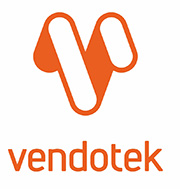Program
Opening
Keynotes
Government
MRT Jakarta
APSCA
Session 1
Payments Inclusivity in Public Transport Systems
Open and inclusive payments for transport applications
Mobility payments appropriate for Asian markets
Customer centricity - paying with what they have
Expo, Refreshments, Networking
Session 2
How ABT Can Support Payments Inclusivity
How full account-based payments support inclusivity
Revenue opportunities from Cloud-based mobility payments
Mobile wallets, digital bank accounts, and EMV in transport
DISCUSSION: Creating inclusivity for mobility payments
Lunch
Session 3
Managing the Transition from CBT to ABT
Enhancing server-based ticketing and processing
Strategies to combine CBT+ABT through the transition
Managing customer perception and acceptance
DISCUSSION: Best practices and case studies
Expo, Refreshments, Networking
Session 4
Inter-City and Urban Transit Ticketing
Integrating inter-city and urban transit ticketing services
Building interoperable ticketing and fare structures
How ABT can harmonise urban and inter-city transport
DISCUSSION: Creating a seamless customer journey experience









